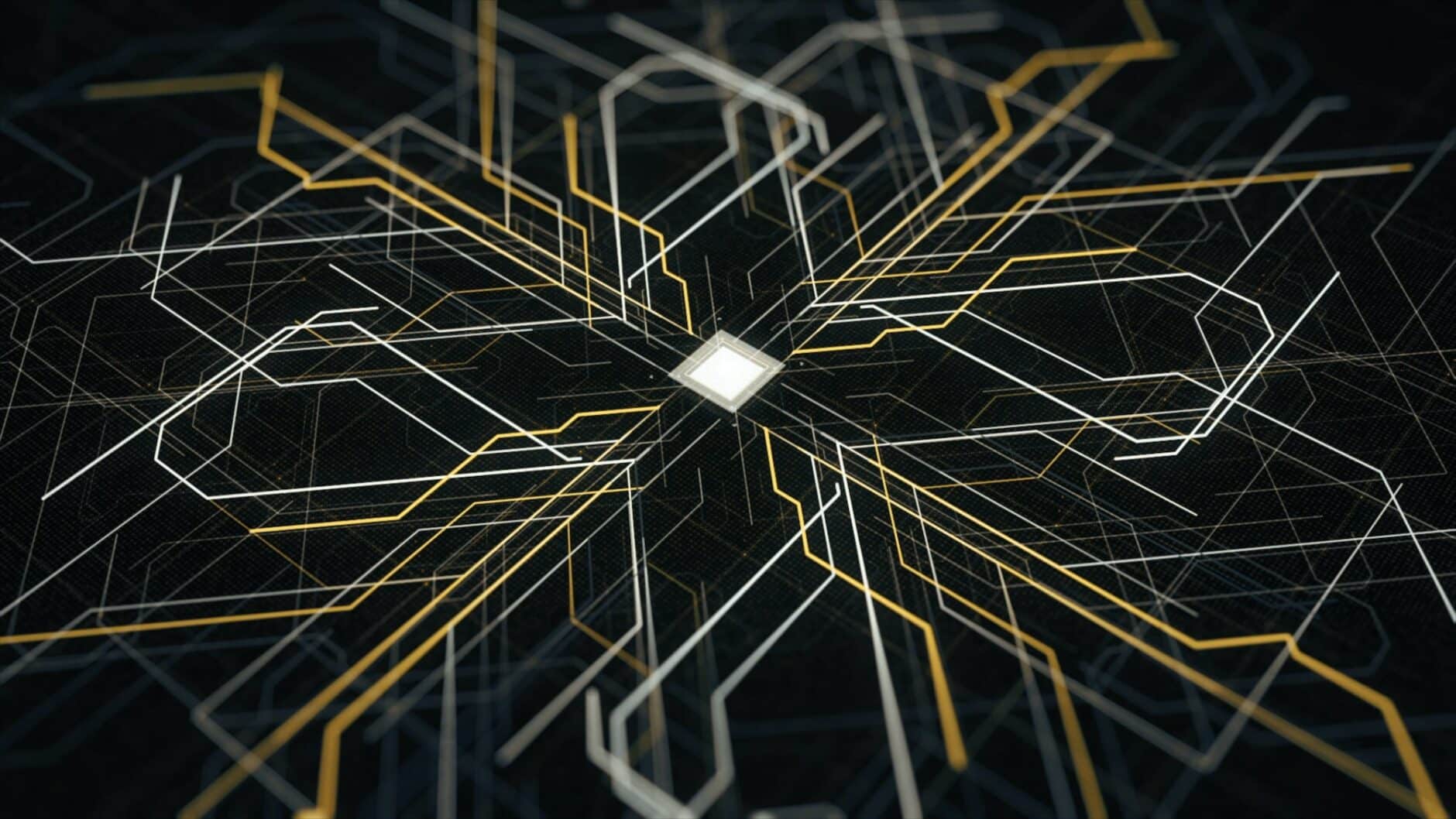The recent introduction of algorithmic innovations to ECG interpretation applications is fundamentally changing how heartbeats are classified.
While doctors and medical professionals can be experts in ECG interpretation, human analysis will never be 100% accurate, especially with asymptomatic rhythms. AI-enabled ECG interpretation tools are being used to analyze waveforms that may not be apparent to even the most experienced ECG reader, including undetectable rhythms, patients at higher risk of dangerous arrhythmias, or even patients at risk of death.
Limitations Of Traditional ECG Diagnosis
Traditional ECG diagnostic techniques rely heavily on the expertise of medical professionals to interpret complex patterns and signals, which can lead to discrepancies in interpretation. Despite advances in computer-aided classification techniques, critical limitations exist because they rely on basic linear measurements.
A significant drawback of conventional methods is that they often don’t capture the wide range of differences in appearance between different types of arrhythmias. As a result, these methods can miss small yet essential changes that can impact the choices made in a patient’s care.
Another drawback is the limited scope of diagnostic criteria traditional ECG diagnosis often considers. Traditional methods focus exclusively on features such as waveform amplitude or duration. However, comprehensive assessments should consider a broader range of factors affecting cardiac function, such as heart rate variability or conduction abnormalities.
Recent Advancements In ECG Diagnosis
Recent advancements in ECG diagnosis have led to significant improvements in detecting and managing cardiac conditions. These innovations have enhanced the accuracy of ECG interpretation and streamlined the diagnostic process, ultimately contributing to better patient outcomes.
Cloud-Based Software To Reduce EKG Signal Noise
The increasing adoption of cloud-based software has significantly impacted the field of ECG diagnostics, mainly by reducing ECG signal noise, which is essential for accurately analyzing cardiac status. HeartKey 2.0, an outstanding suite of ECG algorithms and analysis developed by B-Secur, uses advanced cloud technology to improve signal clarity while minimizing extraneous noise.
In addition to noise reduction, cloud-based software offers other benefits, such as accessibility and scalability, which are critical for modern healthcare systems.
Medical professionals can conveniently access patient records from multiple locations and devices without compromising security or reliability. This technological innovation also allows hospitals and clinics to effortlessly scale their infrastructure to meet changing needs while maintaining cost efficiency.
AI-Based Model For Clinical Diagnosis Using ECG Images
AI-based models are also being used for clinical ECG image diagnosis. This technology allows medical professionals to quickly and accurately extract clinically significant information from ECG findings, improving the efficiency and accuracy of diagnosis.
For example, image-based algorithms can detect abnormalities in cardiac structure or function that conventional methods may miss.
This type of technology has great potential for improving early detection and personalized care, as it can analyze large amounts of patient data from various sources, such as wearables and smart devices.
ECG Monitoring Technology In Smartwatches
Smartwatch technology has led to significant advances in ECG monitoring. Wearable devices can now accurately measure heart rate and rhythm in nonclinical settings.
ECG or photoplethysmography (PPG) by commercial wearables has enabled patients to play a more active role in their healthcare by providing them with real-time health data.
However, it’s important to note that proprietary smartwatch algorithms and ECG recordings may differ between available models, affecting diagnostic accuracy and interpretability.
Revolutionary ECG Interpretation Pipeline
Another significant AI-based advancement in ECG diagnosis is the development of a revolutionary interpretation pipeline. This new technology improves conventional methods by using machine learning and signal processing techniques to analyze complex cardiac signals accurately.
The result is accurate, efficient, and personalized diagnosis for patients with heart problems. This approach uses software algorithms to detect specific patterns and deviations from normal rhythms to identify abnormal electrical activity in the heart.
In addition, this pipeline has real-time monitoring capabilities to detect changes immediately, allowing physicians to intervene promptly if needed.
The Technology Driving Algorithmic Innovations In ECG Diagnosis
Several techniques, models, and methods are used to create novel approaches to analyzing ECG rhythms. These cutting-edge advancements can potentially improve diagnostic accuracy, streamline clinical workflows, and ultimately lead to better patient outcomes.
Machine Learning Techniques
Algorithmic innovations in ECG diagnosis rely heavily on machine learning techniques. Machine learning algorithms are designed to process large amounts of data from which they can learn patterns and make predictions.
One example is the DiaBeats algorithm, a new machine learning-based approach to diagnosing heart disease from ECGs. The algorithm extracts features from an ECG signal to detect abnormalities and accurately predict cardiovascular disease risk factors.
Mayo Clinic has also launched a Remote Diagnostics and Management Platform (RDMP) that integrates innovative AI algorithms with patient health data to improve the diagnosis and management of heart disease.
Deep Learning Techniques
Deep learning techniques have revolutionized how electrocardiograms are interpreted, making the process far more accurate and efficient. Using neural networks and machine learning algorithms, ECG recordings can now detect cardiovascular diseases with remarkable precision.
This has been made possible by advances in deep learning technology, which has also improved molecular imaging in PET/CT scans. These advances have the potential to revolutionize current clinical ECG monitoring.
Neural Networks
Another aspect of algorithmic innovations is the use of neural networks. Neural networks are machine learning algorithms modeled after the human brain’s structure and function. They can analyze large amounts of data, identify patterns, and make predictions based on that information.
For example, a study published in Biomedical Signal Processing and Control journal showed that convolutional neural networks (CNNs) could be used to classify cardiac arrhythmias from 12-lead ECG signals with high accuracy.
Using neural networks holds great promise for improving diagnostic accuracy through faster and more efficient analysis.
Signal Processing Techniques
One of the most important advances in ECG diagnosis is using signal processing techniques to improve accuracy and precision. These techniques include analyzing raw ECG data to remove noise, improve signals, and detect patterns that may indicate heart disease.
Digital signal processing tools, for example, can help extract important features from ECG signals, such as QRS complexes, P waves, and T waves, which are critical for diagnosing cardiac arrhythmias.
Using support vector machines or decision trees, machine learning algorithms can then classify these features into different categories based on their characteristics. These algorithmic innovations have opened up new possibilities for personalized and tailored outcomes, leading to fewer diagnostic errors and better overall patient care.
Algorithmic Innovation Real-World Applications
By leveraging the power of data-driven algorithms, advanced analysis techniques, and artificial intelligence, applying algorithmic innovation advancements in ECG diagnosis has led to significant improvements in cardiac monitoring.
Real-Time ECG Analysis
Real-time ECG analysis technology enables medical professionals to monitor patients’ heart rates and detect arrhythmias on the spot. Thanks to cloud-based software, ECG signal noise can be reduced, leading to faster and more efficient results.
Real-time ECG analysis is especially useful for remote monitoring. With the advent of wearable devices that allow continuous tracking of vital signs such as heart rate variability, data analysis tools are being developed to detect abnormalities or patterns indicative of cardiac arrhythmias that clinicians need to follow up on.
This approach has already proven successful in detecting atrial fibrillation in various clinical settings where people have limited access to specialized medical facilities due to socioeconomic or geographic barriers.
Mayo Clinic recently launched the Remote Diagnostics and Management Platform (RDMP), which combines data with innovative AI algorithms for ECG diagnosis. The platform provides unprecedented accuracy in analyzing electrocardiogram signals through machine learning.
Early Detection Of Cardiac Arrhythmias
Using conventional methods, detecting irregular heart rhythms can be challenging and often requires continuous monitoring over an extended period of time. AI-based models, however, can analyze data from multiple sources and quickly make accurate diagnoses.
Thanks to algorithmic innovations, wearables such as smartwatches can now monitor heart rate and heart rhythm around the clock and provide real-time data for early detection of arrhythmias. This allows healthcare providers to intervene promptly before serious complications arise.
Combining wearable technology with AI-powered analytics creates remote monitoring and diagnosis opportunities outside the hospital.
Improved ECG Interpretation
Algorithmic innovations in ECG diagnosis have led to significant improvements in ECG interpretation. In using machine learning, deep learning, and neural networks, algorithms can analyze data more accurately and precisely than traditional methods.
Personalized and tailored results can be created based on specific patient characteristics. AI-powered tools can also focus on an isolated element, such as an ECG waveform, simplifying clinical complexity.
For example, B-Secur’s powerful ECG algorithms use innovative methods to develop novel network devices connected within the network to provide health information that generates accurate readings about a patient’s well-being.
Benefits Of Algorithmic Innovations
The benefits of algorithmic innovations in ECG diagnosis include improved diagnostic accuracy, customized results, and faster analysis. As technology advances, we can anticipate even more groundbreaking innovations that will reshape the healthcare landscape.
Accuracy And Precision
Misinterpretation of ECGs is a common source of error and accounts for 17% of preventable mistakes in hospitalized patients. However, algorithmic innovations in ECG diagnosis have greatly improved accuracy and precision in diagnosing heart disease.
Algorithms can analyze large data sets of ECG signals quickly and accurately, allowing for more efficient and accurate diagnosis of heart conditions. Algorithms can process the data in ways that aren’t possible for humans, allowing for a more comprehensive analysis of the ECG signal.
They can detect subtle changes in the signal, allowing early detection of heart conditions, such as arrhythmias, early on. With real-time ECG analysis capabilities enabled by innovative network devices and connected apps, physicians can take immediate action, leading to better treatment outcomes.
Faster And More Efficient Analysis
Algorithmic innovations allow for potentially faster and more efficient analysis of patient data. Analyzing ECG results using traditional methods can be time-consuming and requires trained medical professionals to interpret complex signals accurately.
However, with these innovative technologies, medical professionals can analyze large amounts of data quickly and efficiently while minimizing errors. This speed leads to faster diagnoses and benefits patients by allowing them to be treated sooner rather than later.
For example, AI-based models have been developed that use deep-learning techniques in addition to ECG images for clinical diagnosis, achieving comparable or better accuracy rates than human experts.
Personalized And Customized Results
Algorithmic innovations in ECG diagnosis have led to the development of personalized and tailored patient results. This allows clinicians to create treatment plans based on individual patient needs rather than a one-size-fits-all approach.
AI-based models, for example, can analyze data from previous ECGs to identify patterns and predict future heart disease. Additionally, cloud-based software enables remote monitoring and real-time notification when abnormalities are detected.
Patients with chronic heart disease or those undergoing cardiac procedures can benefit from this technology, as it allows physicians to adjust treatment plans as needed without requiring an additional visit or hospitalization.
Will AI Ever Replace Medical Professionals?
There have been many exciting advancements in AI technology in recent years, so it’s hard to say what the future holds. But as effective as artificial intelligence may be at analyzing rhythms and identifying patterns, the tools that doctors and medical professionals have access to today are just that – tools. And just like any other tool, these tools are most effective when used by skilled professionals.
If you’re interested in learning more about ECG interpretation or practicing your ECG interpretation skills, ECGEDU.com offers several self-paced video courses designed to make electrocardiogram and arrhythmia interpretation simple and understandable.




